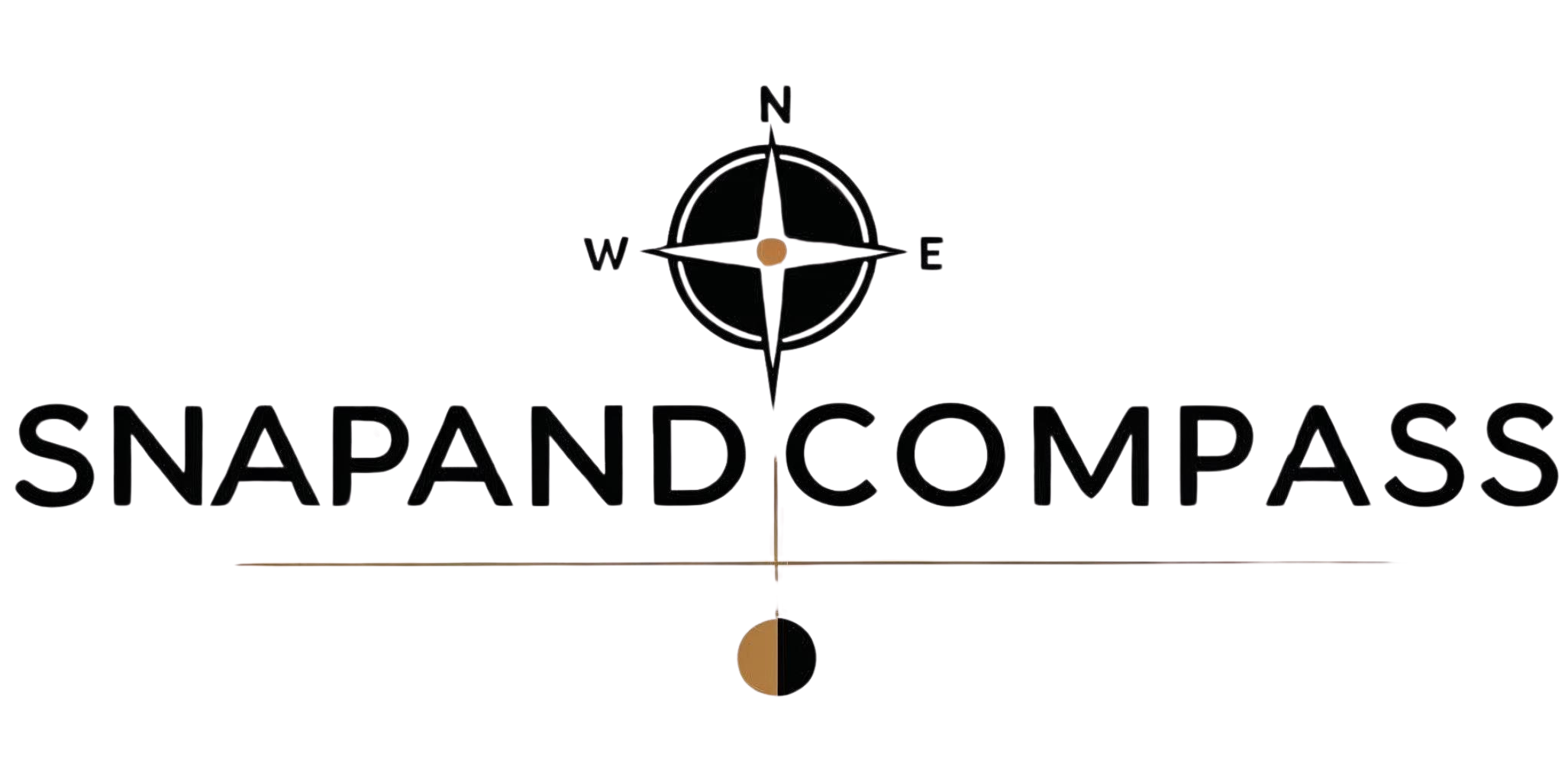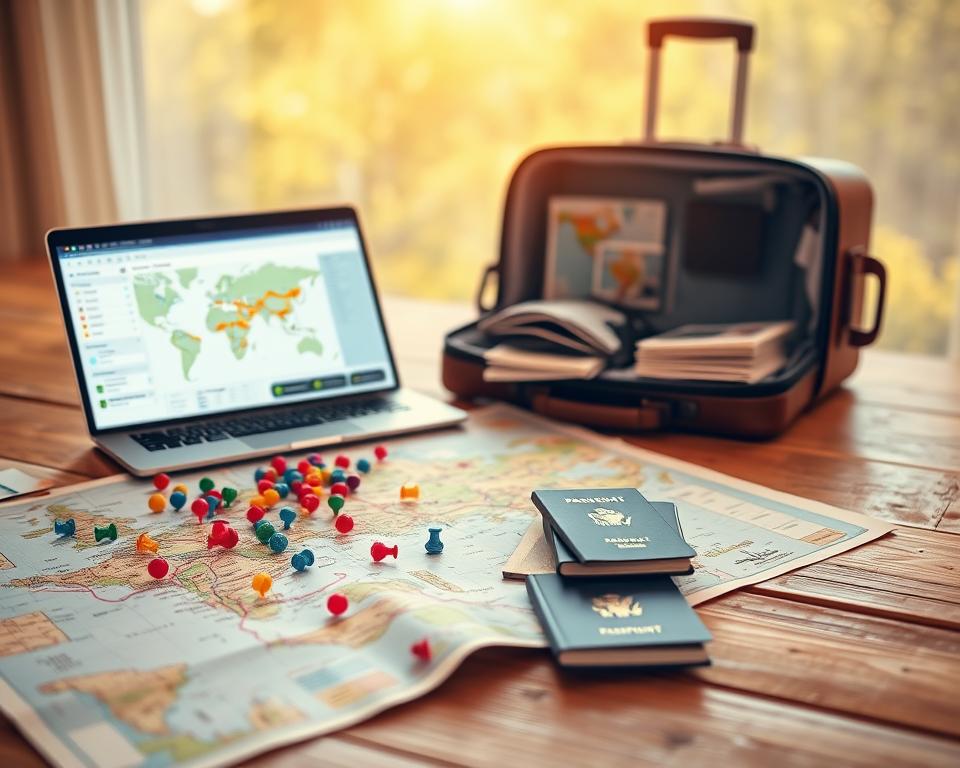Anúncios
how to Travel Design for 2025 asks a bold question: can you build trips that feel purposeful and still leave room for surprise?
You’ll see a hands-on, design-led way that helps you plan smarter. This approach borrows methods from product design and creative practice so you shape each journey with clear constraints and playful habits.
We’ll show practical frameworks, tools, and real examples—from analog kits like Moleskine and gel pens to iPad sketching and color swatches. Expect notes on booking tech such as Expedia’s unified apps, aircraft filters on Kayak, and curated Airbnb Experiences, plus safety cues and responsible choices.
Tip: consult official tourism boards and embassies for entry rules and advisories. This guide offers simple, actionable ideas that boost creativity and lower friction, so your next trip has more meaning and less guesswork.
Why Travel Design matters in 2025: mindset, impact, and emerging trends
A designer’s mindset helps you slow down and spot small signals that shape better journeys.
Anúncios
Observe first. Note textures, typography, and local routines. Sketch, snap photos, and keep color swatches. These artifacts make choices clearer when plans change.
Longer stays and flexible work let you settle into neighborhoods. Vrbo and Airbnb now highlight extended options. That shift changes business rhythms and opens new ways for people to explore.
Brand trust matters more than ever. Companies like Expedia aligned apps so you can move between services with less friction. Filters for aircraft models on major sites give travelers extra control when facing safety challenges.
Anúncios
- Treat trips like a process: set intent, note constraints, and pay attention to context.
- Record details in real time with quick sketches and photos.
- Choose slower routes and local experiences to reduce carbon impact where possible.
- Keep a short log of what works; it builds your understanding and future playbook.
how to Travel Design step by step: practical frameworks, creativity rituals, and tools
Start by narrowing your options with clear limits; constraints spark better ideas.
Start with constraints
Frame your plan by time, budget, season, and purpose. This gives your imagination useful edges.
Build a creative toolkit
Pack lean: a pocket Moleskine or A5 watercolor pad, Muji gel pens, Koh-I-Noor graphite, a tiny watercolor set, or an iPad with Procreate. Keep everything in an all-day bag that fits a sketchbook and camera.

Journaling in real time
Adopt a nightly habit. Sketch a café tile, note a building color, and tape in tickets or packaging.
Place-based inspiration and remote work
Visit galleries, craft shops, and textile markets to gather prompts. If you are working home, set a dedicated space with good seating, adjusted light, and a plant. Rotate environments when possible—an hour in a café, an hour back at your desk.
Rituals that stick
Use micro-briefs: one page of sketches per day, five textures before lunch, or one color study per neighborhood. Try the Pomodoro Technique with Pomofocus and hold short virtual stand-ups to share quick references.
- Frame constraints first.
- Carry fewer tools that you actually use.
- Journal nightly with mixed media.
Real-world examples and mini-itineraries that blend design, culture, and local experiences
Concrete examples help you turn curiosity into a compact, purposeful city plan. Use short templates that mix observation, making, and rest. These models are easy to adapt for your interests and time.
Design-forward city breaks
Plan a two-day focus: mornings for studio or gallery visits, afternoons at craft markets, and evenings on neighborhood walks.
Use a café as a checkpoint. Sketch tiles or menu typography. Note light and signage at dusk.
Immersion through experiences
Pair a museum visit with a hands-on workshop—pottery in Kyoto or printmaking in Copenhagen. Learn by doing, not just viewing.
Browse Airbnb Experiences and Icons for small-group options led by local makers. Read reviews for pacing and group size.
- Choose one market per day and talk with people at stalls about materials.
- Weave short breaks between stops so details settle into your journal.
- Consider an extended stay near a market or park for repeat visits at different hours.
Treat each example as a template. Swap in your city, your energy, and your interests while keeping the flow of making, observing, and resting.
Tools and booking strategies for 2025: from AI trip planners to safer, smarter choices
Focus on platforms that turn vague ideas into concrete bookings. Pick services that respect your time and give clear signals about safety, fees, and workspace needs.
Leverage design-led platforms
Choose unified apps like Expedia’s combined interface across Expedia, Hotels.com, and Vrbo. A consistent UI reduces friction when you move from search to booking.
AI-assisted ideation
Feed open prompts into AI flows for quick flight, hotel, and activity options. Use filters for dates, prices, and amenities, then refine results against your priorities.
Safety and trust cues
Pay attention to aircraft model filters on major sites and recent, specific reviews. Transparent fees and cancellation terms give clearer signs of reliability.
Influencer itineraries and UGC
Treat creator plans as inspiration, not final instructions. Verify timings, availability, and whether the creator’s audience matches your needs as a customer.
Preview before you go
Use 360 tours and early AR/VR previews to compare neighborhoods and hotel layouts. These technology experiments can reveal an opportunity to save time on the ground.
- Test extended-stay filters for weekly or monthly hotel options and confirm workspace details.
- Compare companies by app stability, support response, and consistent product experience.
- Keep a short checklist of three priorities—safety cues, workspace, neighborhood feel—then sort options by those items.
For a view of emerging tools that shape ideation and booking flows, consider this roundup of top AI tools that many customers are testing.
Conclusion
Wrap up your plan by protecting space for noticing, making, and small experiments. Treat each day as part of a larger journey: sketch a corner, note a scent, or revisit a café at dusk.
Carry a simple toolkit and routines that sustain focus whether you are at home or away. Use unified apps and clear reviews to reduce friction, and let AR previews guide shortlist choices, not replace real visits.
Be realistic: plans will shift. Check official tourism boards, transport providers, and embassies for current requirements when safety or visas matter. Keep a short journal, share notes with people who inspire you, and let each itinerary teach the next one.



